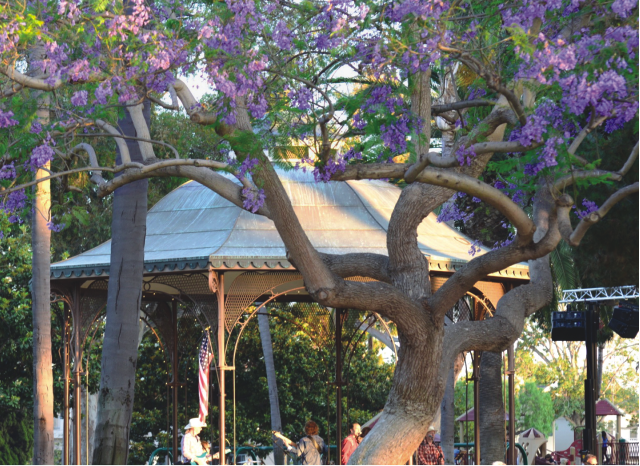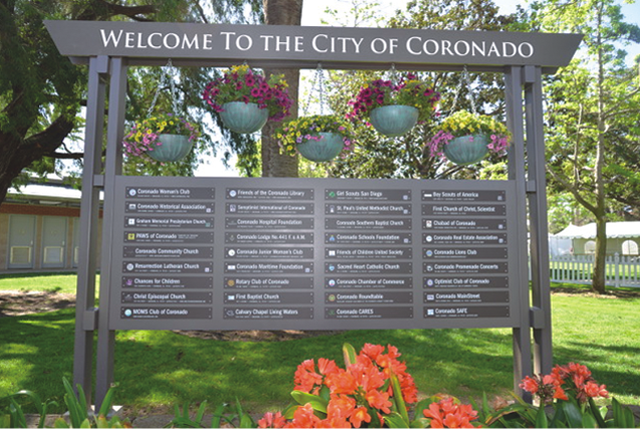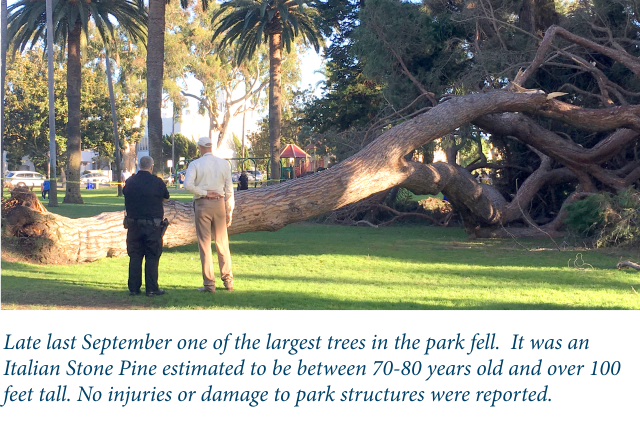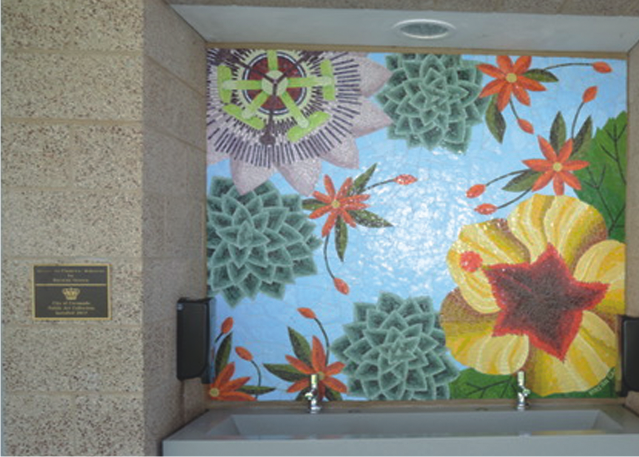Each concert season Spreckels Park sees changes. During the past few years the annual transformation has been significant. A comprehensive master plan reflects the direction and aspiration of the transformation, but it is also a result of the naturally lifecycle of the trees and plants that have become city hallmarks.
A Sign of the Times
New to Spreckels Park this concert season is an updated Community Directory located on the corner of Sixth and Orange. The updated pedestrian focused Directory is all – inclusive incorporating the City’s civic, social, faith-based and philanthropic organizations.
Urban Forest Renewal
There is a lot more sun and much less shade in the park this year. Since the fall, Spreckels Park has lost well over 12,000 square feet of canopy (shade). Last September a very large Italian Stone Pine located in front of the gazebo collapsed taking down two other trees on a beautiful sunny day. This winter due to three significant storms, five sugar gum trees that shaded the playground had to be removed.
According to Arturo Valdivia, who oversees maintenance at Coronado’s parks and beaches, “The sugar gums posed an immediate hazard because of their age, between 90 and 110 years old. The trees were structurally unstable and could collapse or lose a branch at any time and without warning.” It was a significant loss to the park. Without them, “you’re looking at more sunlight across the park,” said Valdivia.
The trees around the playground will be replaced this year. After that five additional trees will be planted each year until all the deforested areas have been replenished.
The new trees will be flowering and deciduous. These not only provide shade, but also bring color and diversity. “Green is great, but what makes a park even more interesting and elegant is a mix of colors,” said Valdivia.
Deciduous trees also improve the vibrancy of the turf. “One of the problems we have is that in sections of the park there are so many trees that water never evaporates. The deciduous trees allow the sun through in the winter and provide lots of shade in the spring and summer,” according to Valdivia.
The candidate trees include: Brisbane box, Jacaranda, Pink Flowering Tabebuia, Chinese Pistache, the Cape Chestnut and the African Tulip. The barren spots will be replenished with large, relatively mature trees. This will not only bring the shade back sooner, but will ensure the health of the trees.
While the city wants to restore the lost canopy quickly, the park crew had to consider maintenance. “It’s not like you just plant 20 trees and say see ya,” Valdivia said. “You have to make sure they’re getting all the nutrients. If you notice something going wrong you have to check the soil.” Location in the park is also a consideration. “In the right spot Jacarandas are ideal,” Valdivia said. “If we put them near the playground, we’d be raking up flowers all summer long.”
The plan is to start with the playground and move down C Avenue toward Sixth Street. There is also some consideration being given to planting trees in the parkway where there are number of gaps. Even though the Italian Pine dropped first, it will be the last to replaced. There are too many roots left. “There is probably two and a half feet of pure surface roots just sitting there,” Valdivia said. “Even when we were trying to resod, we had to use a pump grinder just to get the ground level. Waiting until 2023 gives us a little time for roots to decompose and then will be able to put in new trees.” Coronado’s goal is to make Spreckels Park even more sustainable and spectacular for generations to come!
Blooms of Color
Complimenting the new trees in the park, the Master Plan already includes an art installation of two large mosaics on each side of the newly-remodeled public restrooms to provide year-round color.
The design of the bold floral design mosaics, by Kirstin Green, took over a year to complete and are inspired by the Coronado Flower Show that was established in 1922 and is held annually in Spreckels Park during April.
A Transformation in Progress
The goal of each phase of the transition addresses the changing needs of a vibrant community while preserving the traditions of Coronado’s history and legacy.





